A recent McKinsey report anticipates that UK GDP will fall by 9% in 2020 meaning that about 7.6 million people are under threat of being laid off, remaining on furlough or having their hours and pay cut. In this member article, HR Consultant, Caroline Rochford F.Inst.Pa offers some practical tips for employers on redundancies.
Many organisations are facing real difficulties because of the impact that Covid-19 is having or has had on their business and we are already seeing large scale redundancies being announced. Many of the jobs being affected are within hard hit sectors such as hospitality, arts/culture and retail and where hourly rates are below £10 per hour.
Firstly, what is the definition of redundancy?
The Employment Rights Act 1996 describes the following 4 scenarios:
- the employer ceases to carry on the business in which the employee was employed.
- the employer ceases to carry on that business in the place where the employee was employed.
- the needs of the business for employees to carry out work of a particular kind cease or diminish; or
- the needs of the business for employees to carry out work of a particular kind in the place where the employee was employed cease or diminish.
Note that this definition covers “cease or diminish” i.e. if a business is experiencing a diminishing demand rather than no demand, this could be a redundancy situation. This is also the definition that is relevant for the purposes of determining whether or not an employee is entitled to a redundancy payment.
Planning
As with many employment law processes approaching redundancies should be done in a structured manner. The first step should be to explore in some detail the background as to why an organisation is considering redundancies in order to include this in a redundancy plan to be shared with all affected staff and trade unions, if recognised. It is better to take the time to draw this up before heading straight into consultation to ensure that there is a clear, reasoned, proposal in writing.
One of the alternatives to redundancy that should be considered is the Coronavirus Job Retention Scheme or furlough. Because this scheme has now been extended to 31 October 2020, an obvious question that staff and trade unions will ask is - why now? Why can’t you keep staff on until the end of furlough? It is the obvious alternative to redundancy and therefore businesses should consider this. As part of the redundancy proposal document, it may be prudent to make a decision to keep some staff on furlough and proceed with a smaller number of posts at risk of redundancy.
Another alternative to redundancy might be to terminate early any fixed term contracts for example any posts created to perform specific projects and/or seasonal work which is no longer required. Be aware that the number of these contracts terminated will need to be included in the overall number of redundancies counted for the purpose of collective consultation.
Consultation
Staff will have to be consulted with regarding proposed redundancies. The purpose of the consultation is to reach agreement on the matters discussed. If there are less than 20 staff being considered for redundancy, there is no need to collectively consult with staff. But they will need to be consulted on an individual basis.
If 20 or more posts at one establishment are being proposed for redundancy within 90 days or less then collective consultation will have to be carried out for at least 30 days before the first dismissal takes effect. If more than 100 posts are at risk of redundancy then collective consultation should take place for at least 45 days before the first dismissal takes effect. This is important; failure to consult collectively in these circumstances can lead to claims being made at employment tribunals and if a protective award is granted then an equivalent to 90 days pay may be granted for each employee where there was a failure to consult so it can be a really expensive mistake to make.
In a collective redundancy situation, where 20 or more employees are at risk at one establishment over a rolling 90 day period, then employers will also need to potentially go through a process of electing employee reps unless there is already a suitable employee group to consult with. This could take up to two weeks to complete and consultation can’t begin until this is complete. This will need to be planned carefully in advance and included in any timeline.
As part of the consultation exercise, which should also explain to staff why redundancies are even being considered, the following should be covered as a minimum:
- Ways to avoid or reduce the redundancies e.g. Voluntary Redundancy, a moratorium on recruitment, pay cuts or reduction in hours
- How to reduce the effect of the redundancies
- How the organisation can restructure or plan for the future
- And how employees are selected for redundancy – the criteria should be as objective as possible.
Everyone affected by the redundancy proposal should be included in the consultation including those who are absent on furlough, family leave, and those on long- or short-term sick. Be open –try and maintain a strong level of trust between the organisation and its staff.
As part of the consultation, try and reassure each person that no decision has yet been taken; that any feedback they give will be carefully considered and ensure staff feel that they have a voice. Affected staff should be offered at least two individual consultation meetings at which you may allow them to be accompanied - it is good practice and can help when people get either upset or angry.
At present most of these meetings are being held virtually, rather than being carried out face to face, and it is much harder doing this via Zoom or Teams – it is intense in a different way and quite a stressful experience so be prepared for that.
If possible use a note taker, to ensure that feedback is captured and that any actions are followed up. All meetings should be followed up and confirmed to the employee in writing.
Be clear in communications with staff
- For verbal briefings or meeting, a script might be helpful – ensure that the message is delivered plainly and clearly. It might be helpful to run such communication past someone else first.
- Try and avoid business buzz words and instead use plain English.
- Think about how best to communicate with staff who aren’t currently at risk.
- Consider additional ways in which to communicate during a redundancy consultation period.
- The use of FAQs is a good way of ensuring that staff are kept up to date with additional information. Quite often if one person is asking the question, a lot of others are also thinking it!
Ensure there is sufficient time at the end of the consultation period to fully consider all the feedback received and share with the at-risk staff what is being changed and what isn’t; what feedback was taken on board and what has not been taken forward.
These are unprecedented times; expect unprecedented responses.
Staff might be prepared to take a significant pay cut, reduction in hours in order to keep their job. Consider also whether there are any alternative roles and present all possible alternatives to them.
If using selection criteria, ensure they are as objective as possible, fair and non-discriminatory so absences related to family leave or disability should be discounted. Standard criteria usually include standard of work, skills, qualifications and experience, disciplinary record, and attendance record.
Staff who are made redundant should have this confirmed in writing including any entitlement to statutory redundancy payment. Redundant employees will also be entitled to notice and pay for any accrued holidays not yet taken. If notice is given to run concurrently with furlough, employees’ pay should, in most cases, be topped up to their normal pay. Think about the support that may be offered to staff, for example, those with over two years’ service can get assistance with getting other work.
Finally, it is good practice to offer an appeal to those dismissed on grounds of redundancy.
Special Cases
Anyone who is pregnant or on maternity leave, i.e. within the maternity protective period, and whose role is at risk, has additional protection. They shouldn’t be placed at a disadvantage and nor should their being on maternity or other leave, influence their selection for redundancy. They should be consulted as part of the redundancy consultation process, perhaps using one of their KIT days, and should also receive all other communications. If alternative work is available, they are entitled to preferential treatment and should be offered a suitable alternative role.
The way in which employers approach furlough and redundancies. How they communicate with and treat, their staff, will be a long-lasting legacy and one which may affect customers behaviours and potential job candidates in the future. Candidates and customers are likely to remember these decisions, and how they were taken for some time, so try and do it fairly and with as much compassion and empathy as possible.

Caroline Rochford F.Inst.Pa
HR Consultant, Caroline Rochford Consulting
Caroline is a Fellow Member of the Institute of Paralegals and specialises in employment and HR law.
Caroline Rochford Consulting offers a breadth of HR expertise to small and medium-sized businesses. She providees advice and assistance on all people matters ranging from recruitment/selection, discipline, grievance, attendance management, through to dignified exits, resignation and redundancies.
You can read more articles from the Institute of Paralegals and our members by visiting the IOP Knowledgebase Hub.



